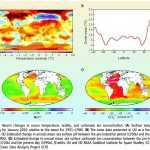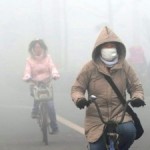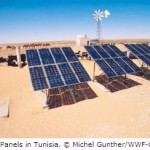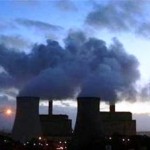
Title: CO2 Emissions from Fuel Combustion (2010 Edition)
ISBN: 978-92-64-08027-8
Author: IEA Secretariat
Publisher: The Online Bookshop, IEA
Language: English
542 Pages (Paperback)
Foreword: By International Energy Agency (IEA)
About IEA:
The International Energy Agency (IEA), an autonomous agency, was established in November 1974. Its mandate is two-fold: to promote energy security amongst its member countries through collective response to physical disruptions in oil supply and to advise member countries on sound energy policy. The IEA carries out a comprehensive programme of energy co-operation among 28 advanced economies, each of which is obliged to hold oil stocks equivalent to 90 days of its net imports. For more information, visit www.iea.org.
Introduction:
In recognition of fundamental changes in the way governments approach energy-related environmental issues, the IEA has prepared this publication on CO2 emissions from fuel combustion. This annual publication was first published in 1997 and has become an essential tool for analysts and policy makers in many international negotiations such as the Conference of the Parties.
The sixteenth session of the Conference of the Parties to the Climate Change Convention (COP 16), in conjunction with the sixth meeting of the Parties to the Kyoto Protocol (CMP 6), will be meeting in Cancún Mexico from 29 November to 10 December 2010.
The data in this book are designed to assist in understanding the evolution of the emissions of CO2 from 1971 to 2008 for more than 140 countries and regions by sector and by fuel. Emissions were calculated using IEA energy databases and the default methods and emission factors from the Revised 1996 IPCC Guidelines for National Greenhouse Gas Inventories.
This annual publication contains:
- estimates of CO2 emissions by country from 1971 to 2008,
- selected indicators such as CO2/GDP, CO2/capita, CO2/TPES and CO2/kWh,
- CO2 emissions from international marine and aviation bunkers, and other relevant information.
This report is published under the responsibility of Executive Director of the IEA, Nobuo Tanaka, and does not necessarily reflect the views of IEA member countries.
Table of Contents:
Introduction
2008 Snapshot of CO2 Emissions
Regional Aspects of the Energy-Climate Challenge
Part I: Methodology
- IEA emissions estimates
- Units and conversions
- Indicators
- Geographical coverage
- IPCC methodologies
Part II: CO2 Emissions from Fuel Combustion
Summary Tables
- CO2 emissions: Sectoral Approach
- CO2 emissions: Reference Approach
- CO2 emissions from international marine bunkers
- CO2 emissions from international aviation bunkers
- CO2 emissions by sector in 2008
- CO2 emissions with electricity and heat allocated to consuming sectors in 2008
- Total primary energy supply
- GDP
- Population
- CO2 emissions / TPES
- CO2 emissions / GDP
- CO2 emissions / population
- Per capita emissions by sector in 2008
- Per capita emissions with electricity and heat allocated to consuming sectors in 2008
- Electricity and heat output
- CO2 emissions per kWh from electricity and heat generation
Global and Regional Totals
World – OECD Total – OECD North America – OECD Pacific – OECD Europe – European Union (27) – Africa – Middle East – Non-OECD Europe – Former Soviet Union – Latin America – Asia (excluding China) – China
Country Tables
Albania – Algeria – Angola – Argentina – Armenia – Australia – Austria – Azerbaijan – Bahrain – Bangladesh – Belarus – Belgium – Benin – Bolivia – Bosnia & Herzegovina – Botswana – Brazil – Brunei Darussalam – Bulgaria – Cambodia – Cameroon – Canada – Chile – People’s Republic of China = Chinese Taipei – Colombia – Congo – Democratic Republic of Congo – Costa Rica – Côte d’Ivoire – Croatia – Cuba – Cyprus – Czech Republic – Denmark – Dominican Republic – Ecuador – Egypt – El Salvador – Eritrea – Estonia – Ethiopia – Finland – France – Gabon – Georgia – Germany – Ghana – Gibraltar – Greece – Guatemala – Haiti – Honduras – Hong Kong, China – Hungary – Iceland – India – Indonesia – Islamic Republic of Iran – Iraq – Ireland – Israel – Italy – Jamaica – Japan – Jordan – Kazakhstan – Kenya – Democratic People’s Republic of Korea – Korea – Kuwait – Kyrgyzstan – Latvia – Lebanon – Libyan Arab Jamahiriya – Lithuania – Luxembourg – Former Yugoslav Republic of Macedonia – Malaysia – Malta – Mexico – Republic of Moldova – Mongolia – Morocco – Mozambique – Myanmar – Namibia – Nepal – Netherlands – Netherlands Antilles – New Zealand – Nicaragua – Nigeria – Norway – Oman – Pakistan – Panama – Paraguay – Peru – Philippines – Poland – Portugal – Qatar – Romania – Russian Federation – Saudi Arabia – Senegal – Serbia – Singapore – Slovak Republic – Slovenia – South Africa – Spain – Sri Lanka – Sudan – Sweden – Switzerland – Syrian Arab Republic – Tajikistan – United Republic of Tanzania – Thailand – Togo – Trinidad and Tobago – Tunisia – Turkey – Turkmenistan – Ukraine – United Arab Emirates – United Kingdom – United States – Uruguay – Uzbekistan – Venezuela – Vietnam – Yemen – Zambia – Zimbabwe
Part III: Greenhouse-Gas Emissions
- Shares and trends in GHG emissions
- Sources and methods
- Total greenhouse-gas emissions














